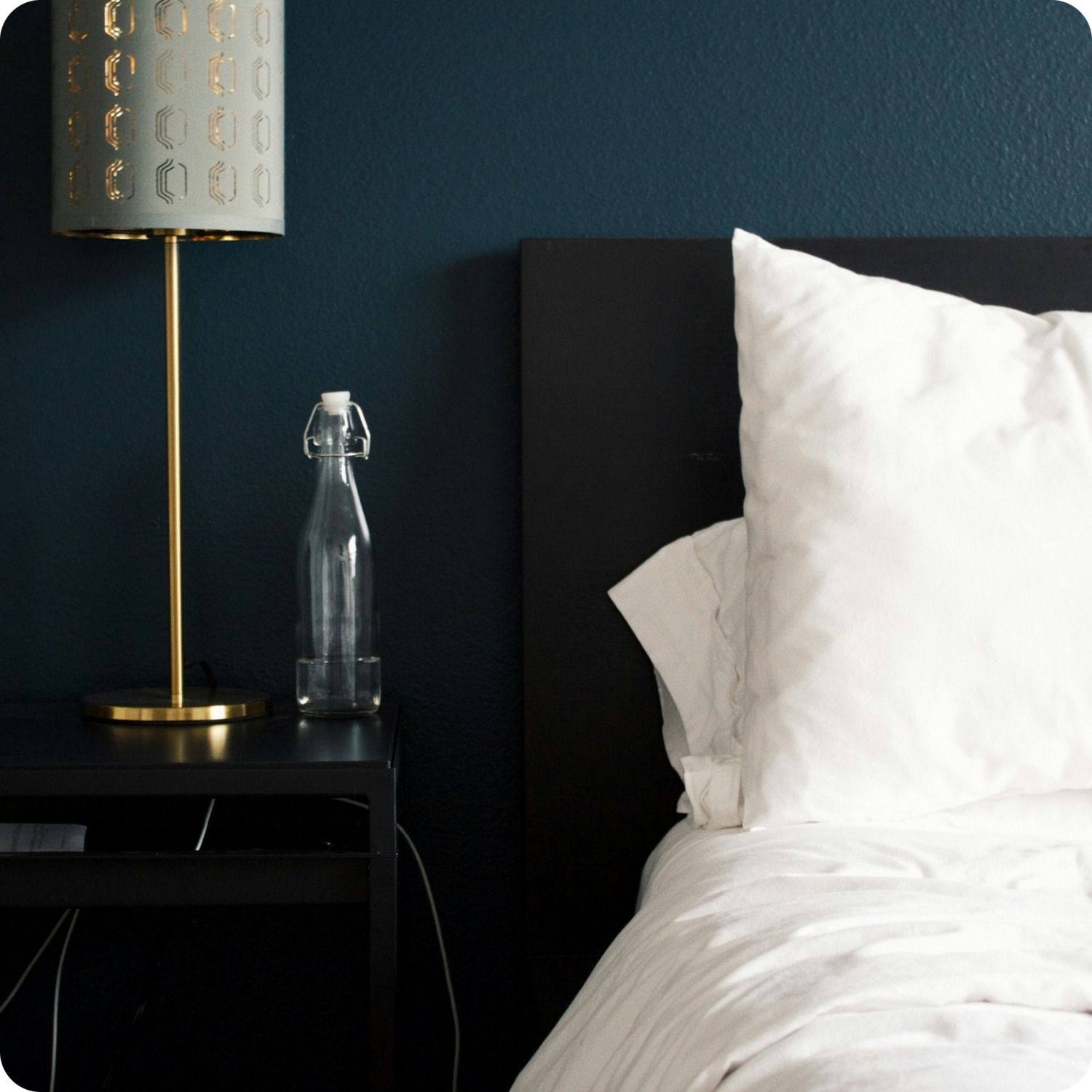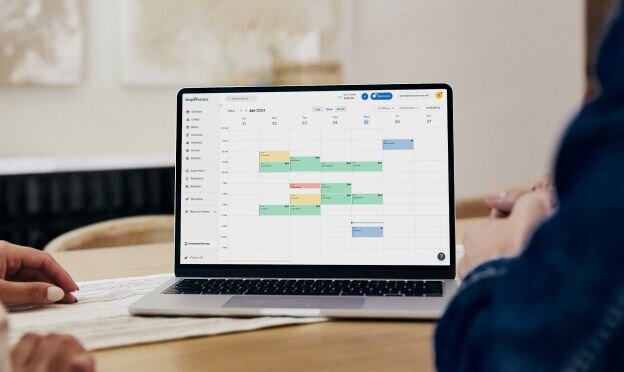Sleep Hygiene Handout
Download the free sleep hygiene handout PDF
Download free resource
Enter your email below to access this resource.
By entering your email address, you are opting-in to receive emails from SimplePractice on its various products, solutions, and/or offerings. Unsubscribe anytime.

This sleep hygiene handout is for therapists who work with clients that are experiencing sleep challenges.
Whether you plan on using it for sleep hygiene counseling or as a psychoeducational tool, download and save this sleep hygiene worksheet, which includes tips for restful sleep along with a sleep log template.
What is sleep hygiene?
Sleep hygiene is a term used to describe sleeping habits and practices that create the conditions for restful sleep.
Whether you provide sleep hygiene therapy or simply psychoeducation to clients experiencing insomnia, it can be useful to underscore the importance of healthy sleeping habits in therapy sessions with clients.
Poor sleep can have a significant effect on the body, mind, emotions, and our safety.
For example, daytime sleepiness can increase stress levels, weaken immunity, and decrease a person’s ability to concentrate. Sleepiness can even lead to more injuries and cause accidents.
While some clients may have an underlying medical issue, such as sleep apnea, there are some tips therapists can share to help clients achieve higher quality consistent sleep. These tips are found below and in the downloadable and printable sleep hygiene handout.
Several modalities refer to the importance of good sleep, many of which overlap.
For instance, dialectical behavioral therapy (DBT) sleep hygiene PDFs may focus on the emotional regulation aspect of good sleep habits. Various mindfulness strategies or distress tolerance practices, like the TIP skill, can relax clients and calm their emotions.
Similarly, cognitive behavioral therapy (CBT) prioritizes healthy sleep behaviors and the reduction of worry.
Steps for waking up refreshed
The free sleep hygiene handout highlights the steps to create the right environment for deep and restful sleep, which, for most adults, is around 7 to 8 hours a night.
Here are some of the steps included in the sleep hygiene handout:
Avoid stimulants
Limit caffeine during the afternoon, and do not consume any caffeinated drinks in the evening. Avoid nicotine altogether, which can make it difficult to sleep.
Sleep when tired
There is little point sitting in bed trying to sleep if you’re not tired. Perhaps, try one of the tips below to put yourself into a calmer state before getting into bed.
Eat mindfully
Avoid large meals for at least two hours before bed.
Be consistent
Aim to go to bed at the same time every day (including weekends).
Create a relaxing sleeping environment
Keep the bedroom cool, quiet, and relaxing by using black out curtains or blinds, decluttering, and removing electronic devices.
Keep moving
Exercise during the day, even if it is a brief walk after dinner.
Limit alcohol intake
Drinking alcohol significantly impacts the quality of sleep and can cause dehydration.
Create a sleep routine
Do a mindfulness activity before trying to sleep, like listening to a meditation, stretching, or journaling.
Bath time
Take a bath one or two hours before bed to help you relax before going to sleep.
Avoid bright devices
Avoid watching TV in your room and make your bedroom a sleep-only place. Also, limit your use of smartphones one to two hours before bedtime and turn on the sleep function at night.
Monitor your sleep
You can download a sleep app that evaluates the quality of your sleep, hours you slept, and notifies you of snoring and waking up. This can provide helpful information for your medical provider.
Keep a sleep journal
If your mind wanders or you find yourself ruminating, it can be helpful to take a note of and actually write down the things bothering you, then attempt to sleep again.
Therapists can also use the sleep log template included in the sleep hygiene worksheet to help clients monitor their quality of sleep.
Get up
Try not to hit the “snooze” button when your alarm rings at your wake-up time. Instead, be consistent and get straight out of bed when the alarm first goes off.
Find a distraction
If you find yourself tossing and turning all night or if you are awake for more than 30 minutes, instead of watching the clock, get out of bed and do something else. Make a cup of chamomile tea or read a book, then try to sleep again when you feel tired.
Prepare the night before
Some people find it helpful to prepare for the next day the night before. For instance, you could get your outfit ready, make sure you’ve tidied the kitchen, pre-prepare your coffee and breakfast, or have your workout clothes ready to go for you in the morning.
Try again
Restless nights happen. The best you can do is to get up and try again in the evening.
Keep your routine
It can be tempting to avoid commitments or activities throughout the day if you’re feeling tired. However, this can reinforce unhelpful sleeping habits.
How to use the sleep hygiene handout
This sleep hygiene worksheet PDF can be used in various ways:
- During an in-person or virtual session as a psychoeducation tool about the importance of good sleep habits.
- As a printable sleep worksheet for clients to identify factors contributing to poor sleep.
- For clients to remind themselves of good sleep hygiene tips and provide feedback at the next therapy session.
- To increase awareness for medical intervention and provide data for the client’s medical provider.
So, what’s included in the free sleep hygiene worksheet?
Our sleep hygiene worksheet for adults contains brief information about the impacts of poor sleep, information about sleep hygiene, and includes a sleep journal template to track sleep habits on a weekly basis.
Sources
- What Are Sleep Deprivation and Deficiency? (2022). https://www.nhlbi.nih.gov/health/sleep-deprivation
- About Sleep (2024). https://www.cdc.gov/sleep/about/index.html
How SimplePractice streamlines running your practice
SimplePractice is HIPAA-compliant practice management software with everything you need to run your practice built into the platform—from booking and scheduling to insurance and client billing.
If you’ve been considering switching to an EHR system, SimplePractice empowers you to streamline appointment bookings, reminders, and rescheduling and simplify the billing and coding process—so you get more time for the things that matter most to you.
Try SimplePractice free for 30 days. No credit card required.

